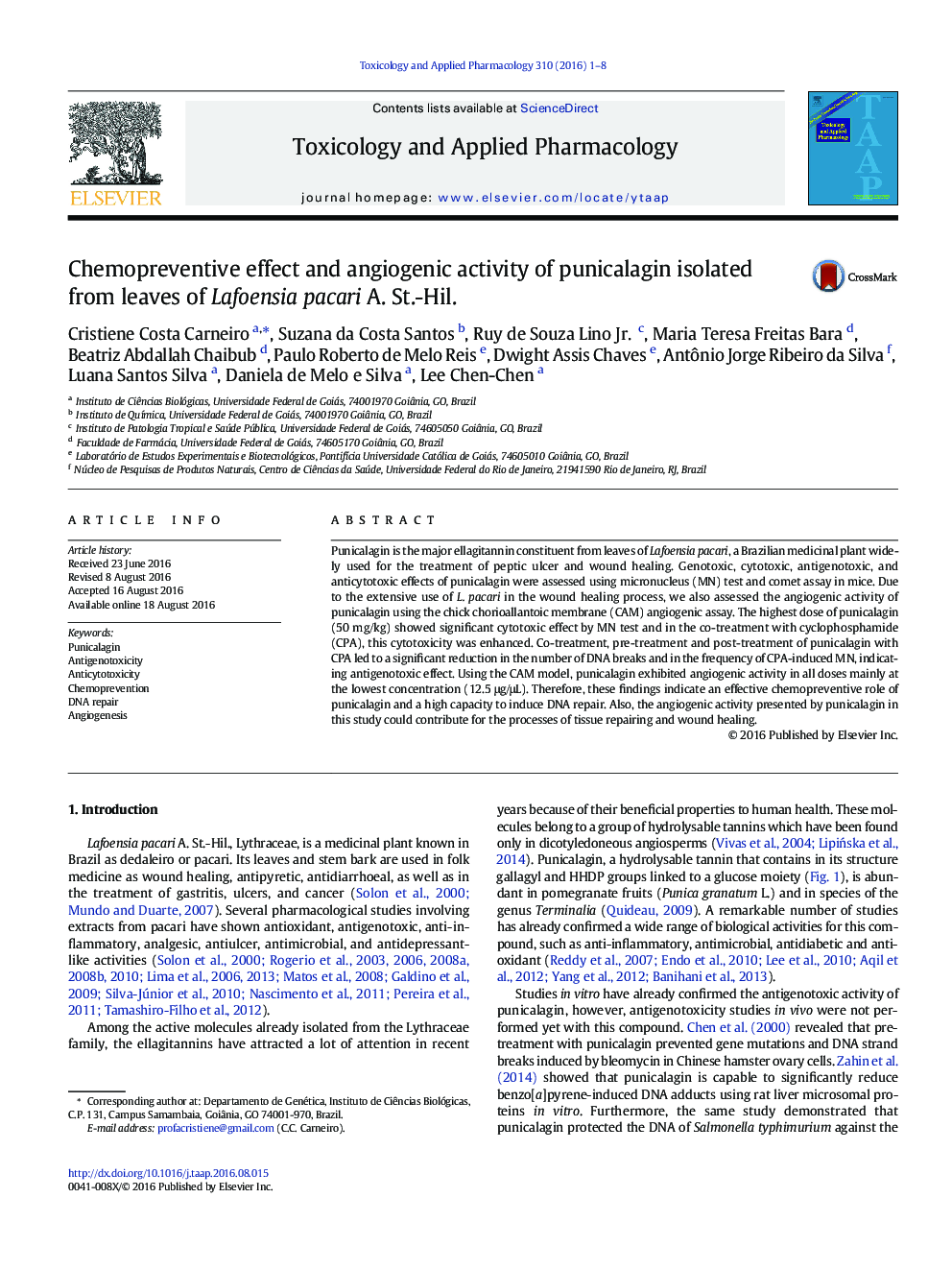| Article ID | Journal | Published Year | Pages | File Type |
|---|---|---|---|---|
| 2567978 | Toxicology and Applied Pharmacology | 2016 | 8 Pages |
•The ellagitannin punicalagin was isolated for the first time from L. pacari leaves.•The genotoxic and chemopreventive effects of punicalagin were evaluated in mice.•The highest dose of punicalagin showed significant cytotoxic effect.•Punicalagin exhibited antigenotoxic effects by the co-, pre- and post-treatment.•Punicalagin showed angiogenic activity and could be applied for tissue repairing.
Punicalagin is the major ellagitannin constituent from leaves of Lafoensia pacari, a Brazilian medicinal plant widely used for the treatment of peptic ulcer and wound healing. Genotoxic, cytotoxic, antigenotoxic, and anticytotoxic effects of punicalagin were assessed using micronucleus (MN) test and comet assay in mice. Due to the extensive use of L. pacari in the wound healing process, we also assessed the angiogenic activity of punicalagin using the chick chorioallantoic membrane (CAM) angiogenic assay. The highest dose of punicalagin (50 mg/kg) showed significant cytotoxic effect by MN test and in the co-treatment with cyclophosphamide (CPA), this cytotoxicity was enhanced. Co-treatment, pre-treatment and post-treatment of punicalagin with CPA led to a significant reduction in the number of DNA breaks and in the frequency of CPA-induced MN, indicating antigenotoxic effect. Using the CAM model, punicalagin exhibited angiogenic activity in all doses mainly at the lowest concentration (12.5 μg/μL). Therefore, these findings indicate an effective chemopreventive role of punicalagin and a high capacity to induce DNA repair. Also, the angiogenic activity presented by punicalagin in this study could contribute for the processes of tissue repairing and wound healing.
